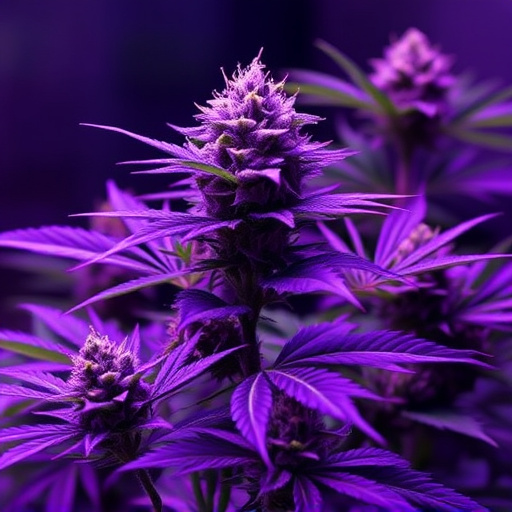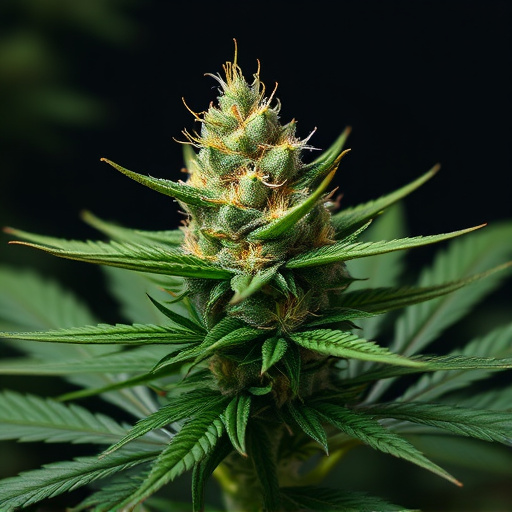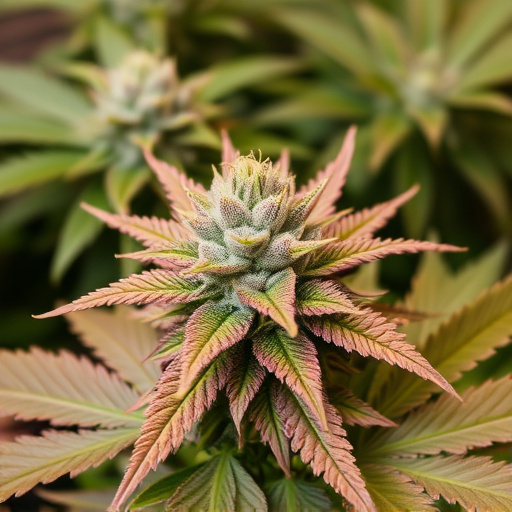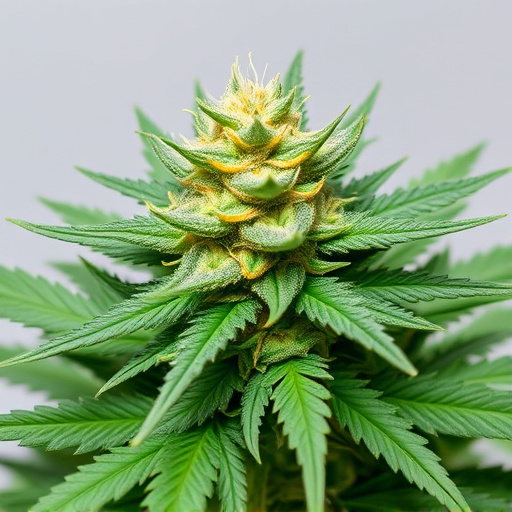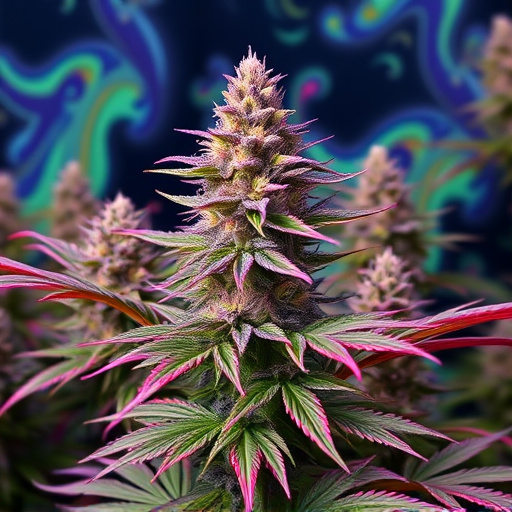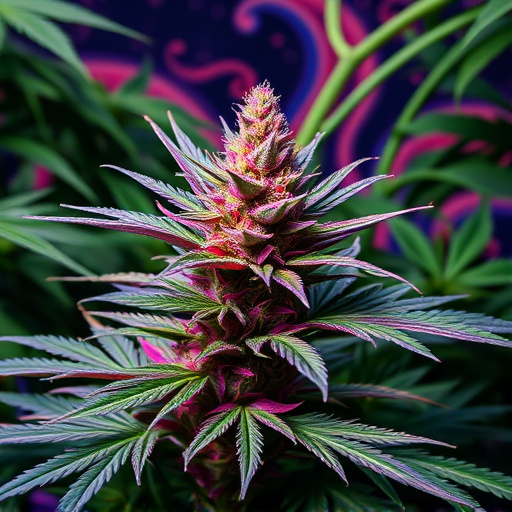Psychedelic cannabis strains' vibrant colors aren't merely aesthetic, but driven by complex genetic interactions producing unique cannabinoid and terpene profiles. Key pigments like anthocyanins and flavonoids, sensitive to temperature, contribute to hues ranging from red to blue. Genetic diversity and terpenes create diverse color expressions, offering insights into varied experiences and potential medicinal benefits. Environmental factors, such as sunlight exposure and temperature, further influence these colors, with cultivators carefully managing these conditions for desired pigmentations that enhance sensory experiences.
Uncover the enigmatic colors of psychedelic cannabis strains! This article delves into the science behind the vibrant purple, red, and blue hues that captivate cultivators and enthusiasts alike. From genetic mutations to terpene profiles and environmental influences, we explore the multifaceted factors that contribute to these unique characteristics. Discover how nature’s palette transforms ordinary weeds into extraordinary psychedelic experiences, offering a deeper appreciation for the complexities of cannabis cultivation.
- Understanding the Genetics Behind Psychedelic Colors
- Terpenes and Pigments: The Chemical Composition of Strain Coloration
- Environmental Factors: How Outdoor Conditions Influence Weed Colors
Understanding the Genetics Behind Psychedelic Colors
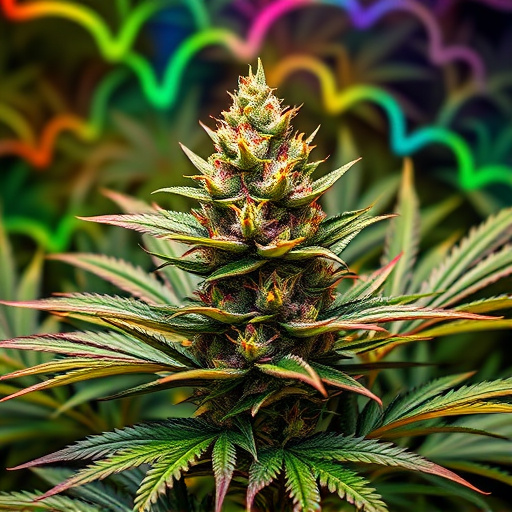
The vibrant and striking colors observed in psychedelic cannabis strains are more than just visual appeals; they’re a result of intricate genetic interactions. These colors, ranging from deep purple to intense blue, are primarily caused by specific cannabinoid and terpene profiles. Cannabis plants produce various pigments, with two primary types relevant here: anthocyanins and flavonoids. Anthocyanins, responsible for red, purple, and blue hues, are temperature-sensitive, leading to variations in color expression as the plant matures. Flavonoids, on the other hand, contribute to the overall color intensity and also possess potential therapeutic benefits.
Genetic diversity within cannabis strains plays a crucial role in determining these color characteristics. Crossbreeding different varieties can introduce new combinations of genes, resulting in unique cannabinoid and terpene profiles. This genetic complexity is what makes some strains appear purple, while others exhibit red or blue tints. Understanding these genetic underpinnings offers insights into the diverse experiences and potential medicinal values associated with psychedelic cannabis strains.
Terpenes and Pigments: The Chemical Composition of Strain Coloration

The vibrant colors associated with psychedelic cannabis strains aren’t merely aesthetic; they’re a result of complex chemical interactions within the plant. Terpenes, aromatic compounds responsible for the characteristic scents in cannabis, play a significant role in determining color. Certain terpenes, when combined with specific pigment molecules, can create stunning hues like purple, red, and blue. For instance, myrcene, known for its earthy scent, pairs well with anthocyanins, pigments that nature employs to protect plants from intense sunlight. This combination often leads to deep, rich shades of purple. Similarly, limonene, with its citrusy aroma, can enhance the production of yellow-hued pigments, resulting in strains that exhibit a lively blue or green tint.
The complexity increases when considering that different cannabis varieties possess unique terpene profiles and pigment expressions. Crossbreeding and selective breeding further diversify these attributes, leading to an array of psychedelic cannabis strains showcasing a spectrum of colors. These chemical compositions not only contribute to the visual appeal but also offer insights into potential therapeutic benefits and diverse sensory experiences.
Environmental Factors: How Outdoor Conditions Influence Weed Colors
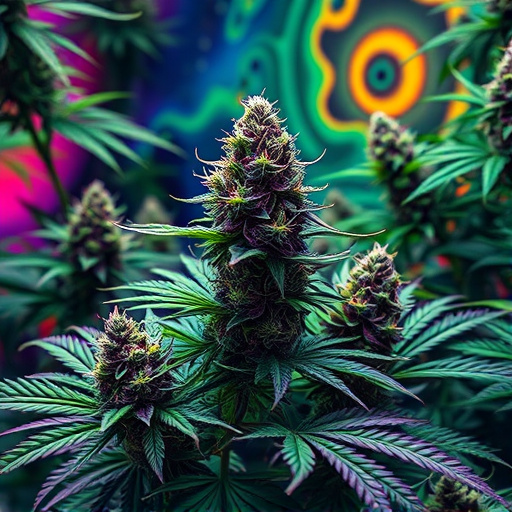
Outdoor conditions play a significant role in shaping the colors of weeds, including those sought after by enthusiasts for their unique aesthetics and potential therapeutic benefits. Environmental factors such as sunlight exposure, temperature variations, and nutrient availability can all contribute to the development of vibrant hues like purple, red, and blue in cannabis plants.
For instance, cooler temperatures during flowering stages can trigger an increase in anthocyanin production, leading to deeper reds and purples. Conversely, intense sunlight may result in higher levels of carotenoids, which can manifest as oranges or yellows. Some psychedelic cannabis strains renowned for their extraordinary colors are often cultivated with meticulous attention to these environmental cues, ensuring the desired pigmentation that not only captivates the eye but also offers a distinct sensory experience.
The vibrant colors observed in psychedelic cannabis strains are a fascinating result of complex interactions between genetics, chemical compounds, and environmental conditions. By understanding the underlying factors that cause these unique hues—from genetic mutations creating novel pigment production to the influence of sunlight and temperature—we can better appreciate the diversity and potential of this captivating plant. These insights not only enrich our knowledge but also enable cultivators to create and select strains with specific color characteristics, adding another layer of allure to the already captivating world of psychedelic cannabis.

